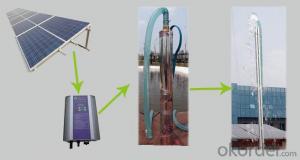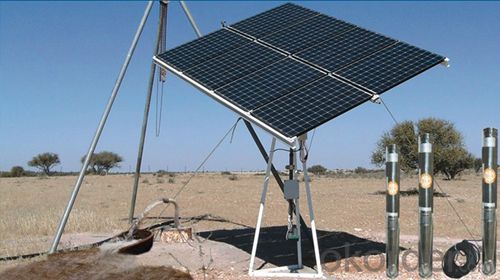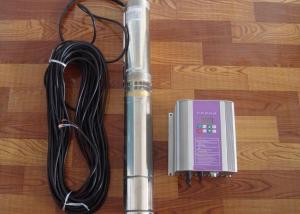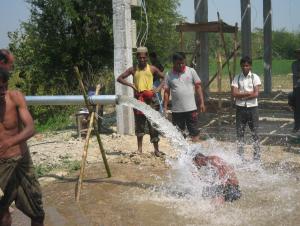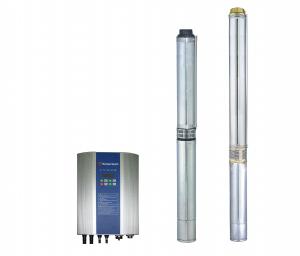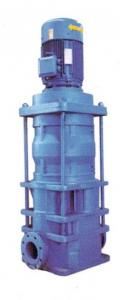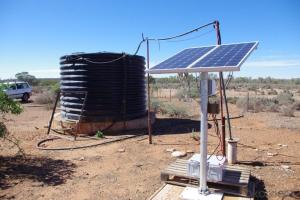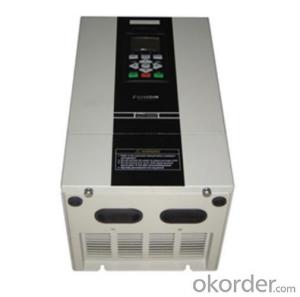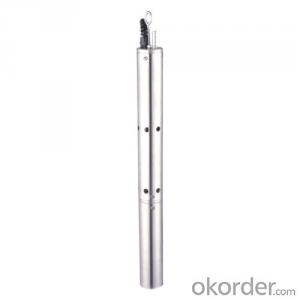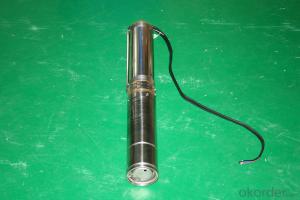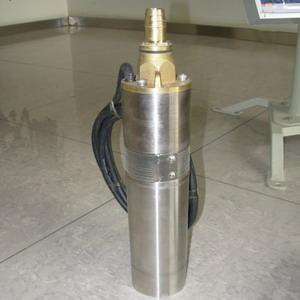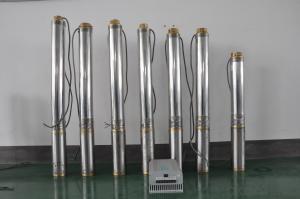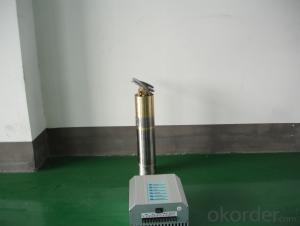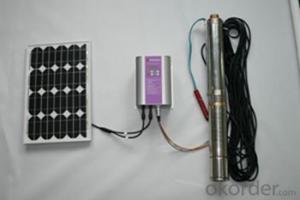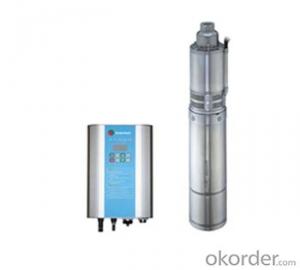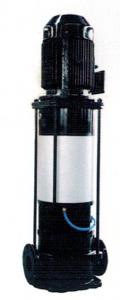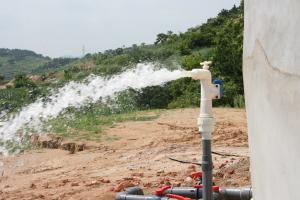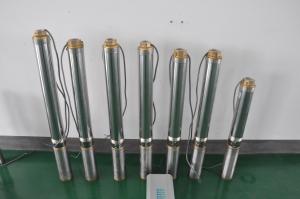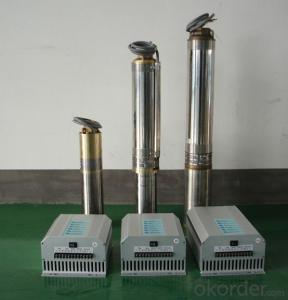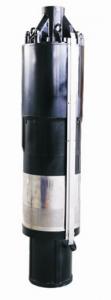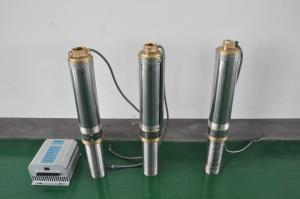Submissive Solar Water Pumping Solar Power Submersible Pump
- Loading Port:
- Shanghai
- Payment Terms:
- TT OR LC
- Min Order Qty:
- 1 set
- Supply Capability:
- 1000 set/month
OKorder Service Pledge
OKorder Financial Service
You Might Also Like
Solar Water Pumping Solar Power Pumps Submersible Pump
DC solar water pumping system consists of the motor, pump, controller, solar array and some other accessories, such as water level sensor, float switch, etc. Considered that storing water is more efficient than storing electricity, the system is designed to directly drive the pump without battery which can reduce the construction and operating cost and routine maintenance effectively.The PV array consists of multiple solar panels connected in series/parallel, which can supply the whole system as power source by converting the absorbed solar radiation energy to the electrical energy. The pump driven by a brushless DC permanent magnet motor draws water from deep-well or river. The pumped water is then fed into reservoir or water tank, or connected to the irrigation system or fountain system directly.
Advanced Technology
Applications Innovation
The efficiency of DC brushless permanent magnet motor has been increased up to 25% in comparison with traditional asynchronous motor.
Technology Innovation
Stator and rotor are sealed by environment friendly casting resin.Motor insulation resistance can be hold higher than 300MΩfor more than 10 years, which consumedly increased the security and reliability of the submersible motor.
Structure Innovation
Casting resign technology processed stator and rotor as well as the water lubricated bearing make the submersible pump environment friendly.
Feature
High Efficiency & High Reliability
DC Brushless Permanent Magnet Motor
Minimum Maintenance, long Service Life
Environment Friendly Materials, Lubricated Without Oil
Application
Village or Family Water Supply
Animal Drinking Water & Livestock Watering
Garden/Courtyard Irrigation
Swimming Pool
Water Supply for Bivouac or Camping Car
Water Supply for Remote Area
Automatic Control
Operate Automatically, No Need Watching
Maximum Power Point Tracking (MPPT)
Dry-run Protection
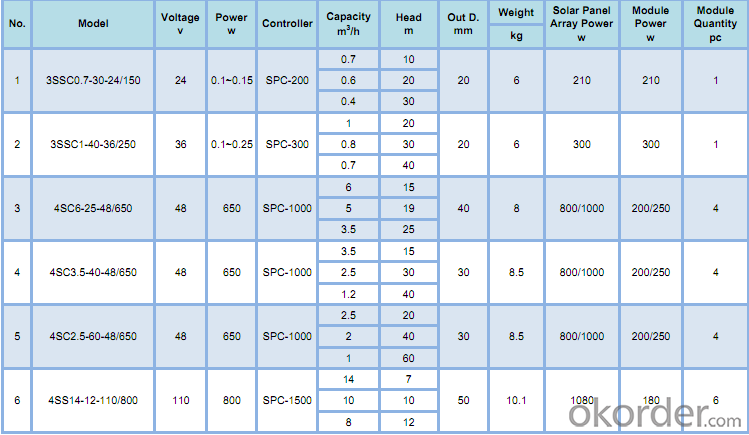
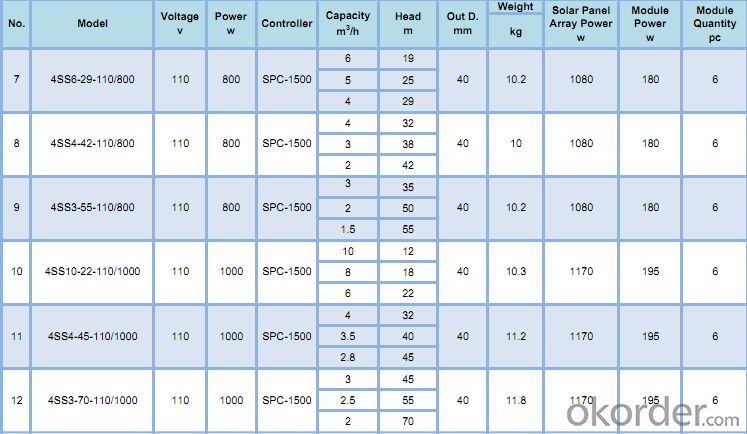
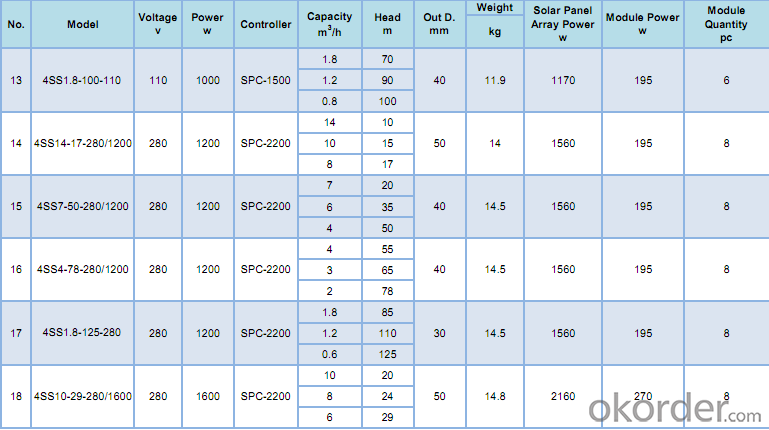
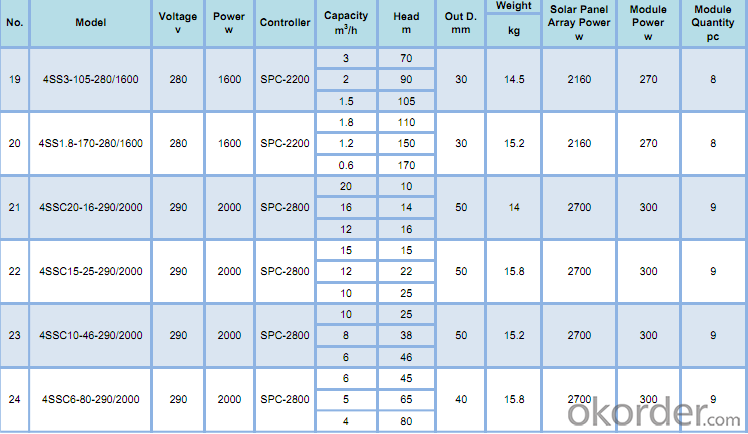
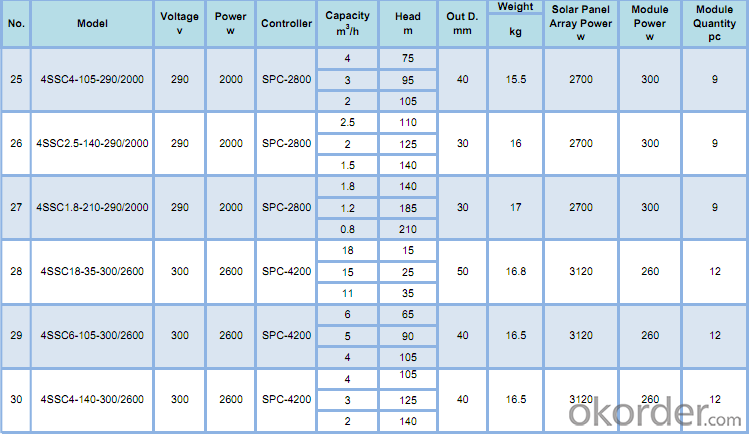
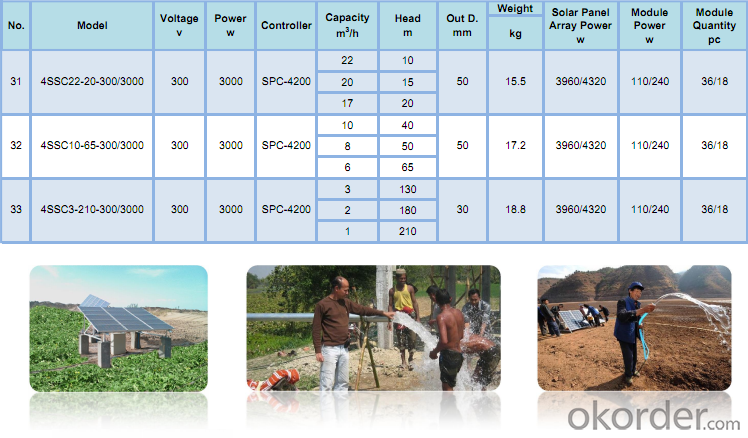
- Q: Can a solar pump be used for water supply in mining operations?
- Yes, a solar pump can be used for water supply in mining operations. Solar pumps are an efficient and sustainable option as they utilize renewable energy from the sun to power the pump. They can be used to extract water from wells, rivers, or other water sources, providing a reliable water supply for mining operations. Additionally, solar pumps are easy to install, require minimal maintenance, and can be cost-effective in the long run, making them suitable for remote mining sites.
- Q: How much space is required for installing a solar pump?
- The space required for installing a solar pump depends on various factors such as the size and capacity of the pump, the solar panel system, and the water source. Generally, a solar pump requires adequate space for the solar panels to be mounted, which typically range from a few square meters to several square meters. Additionally, there should be enough space for the pump unit, valves, and piping system. The exact space requirement can vary significantly based on the specific requirements of the project and should be determined by a professional during the design phase.
- Q: How does a solar pump handle water source contamination from natural disasters?
- A solar pump cannot directly handle water source contamination caused by natural disasters. However, it can provide a reliable and sustainable source of water by tapping into groundwater reserves which are typically less prone to contamination during such events. Additionally, if the water source does become contaminated, it is essential to employ proper filtration and purification methods to ensure safe drinking water.
- Q: Can a solar pump be used for hydroponic farming systems?
- Yes, a solar pump can be used for hydroponic farming systems. Solar pumps are an environmentally friendly and cost-effective solution for providing water circulation and nutrient delivery in hydroponic systems. They can effectively power the necessary water flow and can be easily integrated into the overall setup.
- Q: What is the role of solar water pump?
- Solar water pump itself, reliable: photovoltaic power rarely used to move parts, reliable work.
- Q: Can a solar pump be used for wastewater irrigation?
- Yes, a solar pump can be used for wastewater irrigation. Solar pumps use solar energy to power the pumping mechanism, making them a sustainable and cost-effective option for various applications, including wastewater irrigation.
- Q: Can a solar pump be used for desalination of seawater?
- Yes, a solar pump can be used for the desalination of seawater. Solar pumps are commonly used in combination with desalination systems to provide the necessary energy for the process. Solar-powered desalination systems utilize the energy from the sun to power the pump, which in turn drives the seawater through the desalination unit. This process typically involves reverse osmosis or distillation to remove the salt and impurities from the seawater, resulting in fresh drinking water. The use of solar pumps for desalination offers several advantages, such as being environmentally friendly, renewable, and cost-effective in the long run, as they do not require any external power sources. The availability of abundant sunlight in coastal areas makes solar pumps an ideal choice for desalination projects in regions where freshwater scarcity is a pressing issue.
- Q: Can a solar pump system be integrated with a smart home or automation system?
- Yes, a solar pump system can indeed be integrated with a smart home or automation system. The integration of these technologies allows for increased efficiency, convenience, and control over the solar pump system. By connecting the solar pump system to a smart home or automation system, users can remotely monitor and control the operation of the pump. This can be done through a smartphone application or a central control panel within the smart home system. Users can easily adjust the pump's settings, such as flow rate and timing, from anywhere with an internet connection. Moreover, the integration with a smart home or automation system enables the solar pump system to be synchronized with other devices and systems within the house. For example, the pump can be programmed to automatically turn on and off based on temperature or humidity levels, or it can be linked to a rainwater harvesting system to ensure efficient water usage. Additionally, integrating a solar pump system with a smart home or automation system allows for data monitoring and analysis. Real-time data, such as solar irradiance levels, water flow rate, and energy consumption, can be collected and analyzed to optimize the performance of the pump system. This information can be used to identify potential issues, track energy savings, and make informed decisions regarding maintenance or upgrades. In summary, integrating a solar pump system with a smart home or automation system offers numerous benefits, including remote control, synchronization with other devices, and data monitoring. This integration allows for a more efficient and convenient operation of the solar pump system, enhancing overall energy efficiency and sustainability in the smart home or automation setup.
- Q: Can a solar pump be used in areas with limited technical expertise?
- Yes, a solar pump can be used in areas with limited technical expertise. Solar pumps are designed to be simple, reliable, and easy to operate, making them suitable for use in areas where there may be limited technical knowledge or expertise. They do not require complex infrastructure or wiring, and their maintenance and troubleshooting requirements are minimal. The simplicity of solar pumps makes them an ideal solution for providing water in remote locations or areas with limited access to electricity or skilled technicians.
- Q: How does the quality of the solar panel affect the performance of a solar pump?
- The quality of the solar panel directly affects the performance of a solar pump. A high-quality solar panel will efficiently convert sunlight into electricity, providing a consistent and reliable power supply to the solar pump. This ensures optimal performance and maximum water flow. On the other hand, a low-quality solar panel may have lower efficiency and produce less power, resulting in reduced pump performance and potentially insufficient water supply.
Send your message to us
Submissive Solar Water Pumping Solar Power Submersible Pump
- Loading Port:
- Shanghai
- Payment Terms:
- TT OR LC
- Min Order Qty:
- 1 set
- Supply Capability:
- 1000 set/month
OKorder Service Pledge
OKorder Financial Service
Similar products
Hot products
Hot Searches
Related keywords
